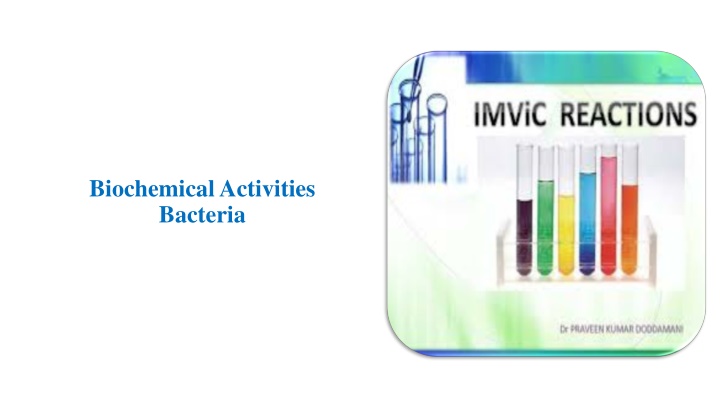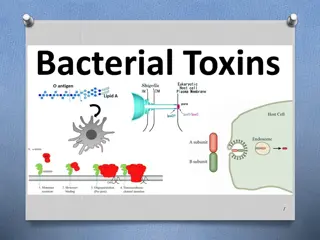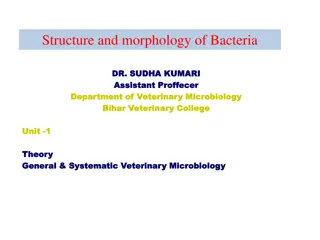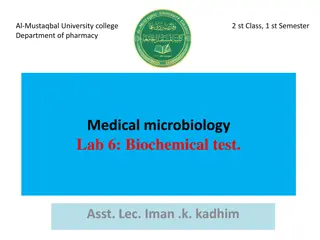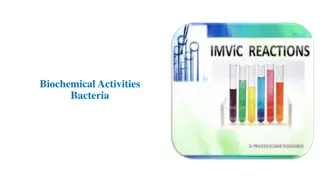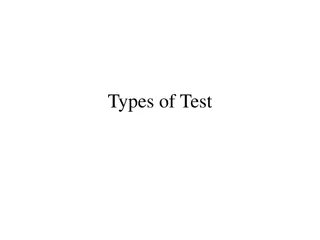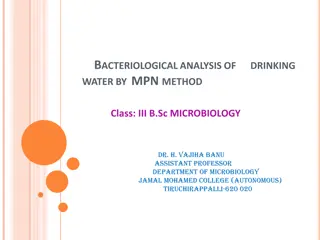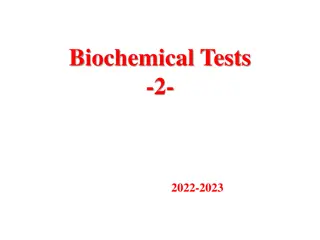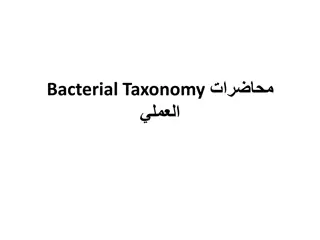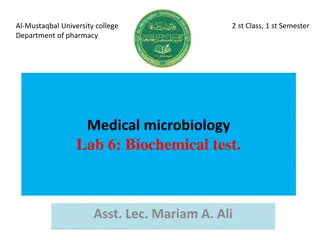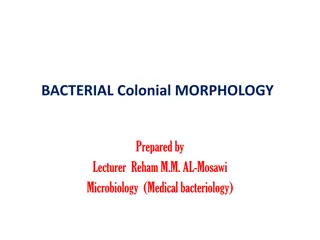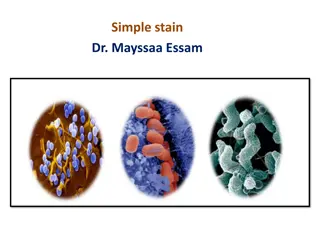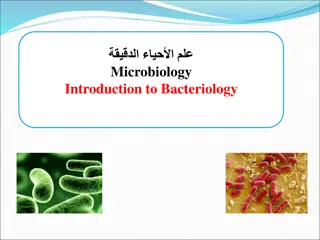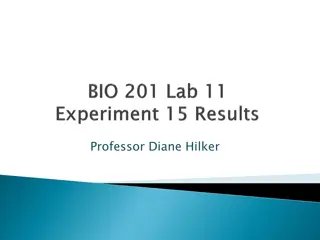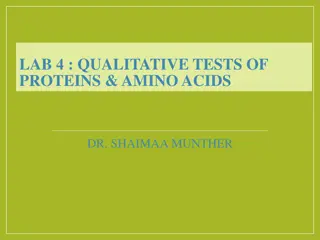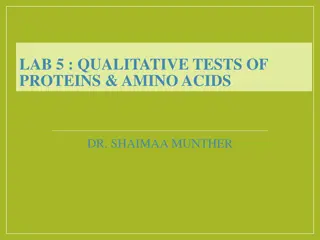Bacterial Biochemical Identification Tests in Microbiology
Understand the significance of biochemical tests like the Triple Sugar Iron Agar Test (TSI) and the IMViC Test for identifying enteric bacteria. Learn about indole production, methyl red test, and other methods used in bacteriology.
Download Presentation

Please find below an Image/Link to download the presentation.
The content on the website is provided AS IS for your information and personal use only. It may not be sold, licensed, or shared on other websites without obtaining consent from the author.If you encounter any issues during the download, it is possible that the publisher has removed the file from their server.
You are allowed to download the files provided on this website for personal or commercial use, subject to the condition that they are used lawfully. All files are the property of their respective owners.
The content on the website is provided AS IS for your information and personal use only. It may not be sold, licensed, or shared on other websites without obtaining consent from the author.
E N D
Presentation Transcript
Biochemical Activities Bacteria
Triple Sugar Iron Agar Test Triple sugar iron agar test is generally used for the identification of enteric bacteria , also used to distinguish the Enterobacteriaceae from other gram negative intestinal bacilli by their ability to catabolic glucose , lactose or sucrose and to liberate sulfide from freeous ammonium sulfate or sodium thiosulfide . TSI agar slant contain 1%concentration of lactose and sucrose , and 0.1%glucose concentration . The pH indicator phenol red , is also incorporated in to medium to detect acid production from carbohydrate fermentation . TSI slant are inoculated by streaking the slant surface using a zig-zag streak pattern and than stabbing the agar deep with straight inoculating needle , incubation is for 18-24 hours in order to detect the presence of sugar fermentation , gas production , and H2S production .
The IMViC Test The identification of enteric bacteria is of prime importance in determining certain food born and water borne disease . Many of the bacteria that are found in the intestines of humans and mammals belong to the family of Enterobacteriaceae . These bacteria are short , gram negative , non sporing bacilli . They can be subdivided into lactose fermenters and non fermenters
IMViC Test I = test for production indole from tryptophan. M = methyl red test for acid production from glucose . V = voges-proskauer test for production of acetoin from glucose . C = test for the use of citrate as the sole for carbon source .
Indole production The amino acid tryptophan is found in nearly all proteins . Bacteria that contain the enzyme tryptophanase can hydrolyze tryptophan to its metabolic products , namely , indole , pyruvic acid and ammonia . The bacteria use the pyruvic acid and ammonia to satisfy nutritional needs ; indole can be detected by the addition of Kovac s reagent , which reacts with the indole producing a bright red compound on the surface of the medium .
Methyl red test A considerable number of gram negative intestinal bacteria can differentiated on the basis of the end produced when they ferment glucose in MR-VP medium (glucose phosphate peptone water) broth tube. Genera of bacteria as Escherichia , Salmonella , Proteus , ferment glucose to produse large amounts of (lactic , acetic , succinic and formic acids) . Methyl red is a pH indicator ( red at pH less than 4.4 and yellow at a pH greater than 6 ) .
Methyl red test Escherichia coli Klebsiella pneumoniae
Voges-Proskauer test The Voges Proskauer test identifies the bacteria that ferment glucose , leading to 2,3 butanediol accumulation in the medium the addition of 40% KOH and 5% solution of -naphthol in absolute ethanol ( Barrit s reagent ). In the presence of the reagent and action a cherry red color develops in the culture medium 15 minutes following the addition of Barrit s reagent represents apositive VP test ; absence of red color is negative VP test.
Voges-Proskauer test Klebsiella pneumoniae Escherichia coli
Citrate utilization This test determines the ability of bacteria to use citrate as a sole carbon source for their energy needs . This ability depends on the presence of citrate permease that facilitates transport of citrate into the bacterium . Once inside the bacterium , citrate is converted to pyruvic acid and CO2. Simmon citrate agar slant contain sodium citrate as the ( carbon source) ammonium ion (NH4) as the ( nitrogen source) & the pH indicator (Bromothymol blue) .
This test is done on slants since O2 is necessary for citrate utilization . When bacteria oxidize citrate , they remove it from the medium and liberate CO2. CO2 combine with sodium (supplied by sodium citrate) and water to from sodium carbonate an alkaline product . This raises the pH , turns the pH indicator to a blue color and represents a positive citrate test ; absence of a color change is negative citrate test . Citrate negative cultures will also show no growth in the medium and the medium remains green.
Citrate utilization Klebsiella pneumoniae Escherichia coli
